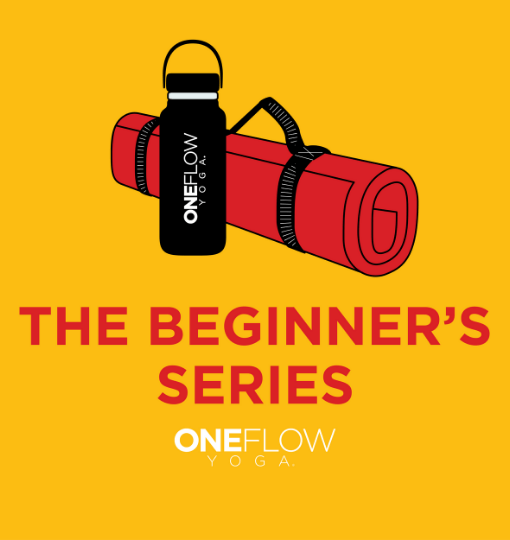You’re a person who likes to know the value of things so you ask, “What are the benefits of yoga?” And it’s a fair question. You should know what you’re getting in exchange for the time and effort you’re putting into practice.
When people talk about benefits they usually make lists and speak in generalities. And that format is helpful, as is this pdf by Timothy McCall, M.D. who wrote, Yoga as Medicine. It’s valuable because it has links to the relevant studies built into it. Another place you might like is from NPR which discusses the findings of a 2017 study that found yoga to be very effective for back pain.
The blanket statement on yoga is that it benefits your entire life.
But that’s not very helpful.
Instead, let’s talk about the biggest benefit of yoga that no one talks about—discomfort.
Beyond physical fitness and peace of mind, discomfort is a key to growth and doing what is most important to you.
When I use the term discomfort I mean, “the feeling of being uncomfortable.” It’s an internal sensation of uneasiness. It is different from pain. And learning to be ok with it can make you powerful because most people are not.
And that’s unfortunate because if you want to grow, you’ve got to throw your arms around discomfort like it’s a loved one back from a long voyage. People who play at the highest levels or have deep intimacy in their relationships get this.
I’m very comfortable with uncomfortable situations, and I think that can seem odd to people, that I like the thrill of discomfort. Stephen Colbert
Why Discomfort Is the Biggest Benefit of Yoga
Discomfort arises when things are unfamiliar to us. We’re not quite sure what to do or how to act. And this is exactly what we need—novelty.
Things that are new to us challenge our habits—our repetitive ways of thinking, speaking and moving. In Sanskrit the concept that addresses repetition is samsara.
“Sara” translates as “current”. Samsara means to be stuck or held in the current— the current of our lives. You live the same day over and over again. You eat the same food, see the same people, have the same relationships, think the same thoughts.
A 2006 study on habits from Duke University researchers estimated that 47 percent of human behavior is habitual. Almost half of our lives is going through the motions.
Putting ourselves in novel situations releases dopamine, the feel-good chemical, in the brain.
More than that, it leads to creativity as we find new solutions that might serve us better.
After a strike in 2014, London subway riders had to scramble to find a new way to work and back. Roughly 5% stuck with the new route saving a whopping 20% off their commute time. The study that verified this stated, “…a significant fraction of commuters…do not travel on their optimal route.” Yes, the habits we have adopted aren’t always optimal and need investigation.

Yoga Changed My Life
Change can only happen with discomfort. Different results are possible only when you make different choices.
You can think of our lives as a story. And who better to consult on stories than Robert McKee who wrote, Story, the definitive book on screenwriting. If you want your characters in a story to change than you give them lots of problems and challenges—you make them uncomfortable.
In movies, we call the point where everything changes the inciting incident. Robert McKee defines it as an event that “radically upsets the balance of forces in the protagonist’s life.” It’s an important turn in any story, including our own, because even though you have ups and downs, your life is more or less in control. That’s thanks to the habits and strategies you have adopted.
Then discomfort comes along and not only scrambles the pieces, but it also flushes a few down the toilet.
We need inciting incidents to progress the story because they draw a line. Life will never be the same and you can either make a change or suffer the consequences.
Time to Go to Work
We refer to the process of being with discomfort as “doing the work.”
“I like the way you work it, No Diggity” Blackstreet
It’s an important concept worth repeating. Doing the work is engaging in the process of discomfort.
Yoga is about engaging with discomfort.
Engaging with discomfort is a powerful act because it gives you agency, the power to create change in your life. We each have the power to act on our behalf and not be subject to the whims of the world.
If you don’t have agency, then life happens to you which puts you in the role of victim.
Agency doesn’t mean you have control of the way things turn out but the meaning you give and what you think about them.
Agency creates possibility, and that creates hope.
There is a term for understanding what the work is and then not doing it.
It’s called “spiritual bypassing.”
Spiritual bypassing, coined by psychologist John Welwood in 1984, refers to,
a widespread tendency to use spiritual ideas and practices to avoid facing unresolved emotional issues, psychological wounds, and unfinished developmental tasks…trying to rise above the raw and messy side of our humanness before we have fully faced and made peace with it.
You have to face things instead of going around them. That’s why it’s said, “the only way is through.

What does facing things look like?
It means being with the thoughts and feelings you have. You are a full and active participant and observer of what is going on.
For example, you might be in head-to-knee pose, janu sirsasana, where you try to fold over your front leg. You notice the sensation of your hamstring and how it limits your range of motion; how far you can go forward. Taking it another level, you see how your natural instinct is to push or force your way further. Beyond that comes the thought of trying to prove something and being worthy instead of accepting it as it is in this moment.
All of that arises from a simple forward fold.
The work is an internal process that then manifests as external actions.
It’s not about the hamstring or the fold, though, it’s about the repetitious way we do things, such as get into the same type of relationship over and over again.
We tend to go with what is familiar, which, for some of us, means pushing our way through. The more effective and empowering, but uncomfortable notion, is to try something different.
This takes courage and practice, and you can learn to do it.
Your yoga mat offers an ideal environment to work with discomfort for many reasons.
Safety First
We describe the mat as the field. In the Bhagavad Gita it is a battlefield. In the yoga studio, the battle is a metaphor for the constant struggle we have within ourselves. We can pause and be with the discomfort within us—in a safe place.
Yes, you can do the same by climbing mountains or in your relationships, but the risks are much greater. If you error climbing a mountain, you fall off the mountain.
Being safe is not the avoidance of risk. Alex Honnold, who scaled Yosemite’s El Capitan without ropes says risk is an inherent part of living. You mitigate it by working with and knowing yourself.
Try Things
You can try a whole bunch of different ideas without affecting others. You can try being mean to your hamstring then kind. You can try tensing your jaw and your face and then softening your expression. It’s unethical to experiment like this in relationships, but on the mat, you can test the limits.
Slow Down
Researchers often use high-speed cameras to study what is occurring. You’ve seen this in car commercials when the car crashes into a wall to see how well the test dummy survives the impact.

Going slow allows you to see what’s happening and gain insight.
The yoga practice allows you the slowdown and see how you are thinking, feeling and moving. You can witness sensations spread throughout your body like dye placed in water. And you can affect how far and wide they distribute by how you react.
This is different from how we tend to go through life.
When you are racing through your day, you tend to lean on your habits the most. When you slow down and make space, you can bring awareness and inquiry to how you are doing things. This process reveals what hides from you and gives you options
Success. Go Big or Go Home is a No Go
Working with discomfort is scalable. You don’t have to go to extremes.
When learning to cook, you don’t have to think “feast” if you’ve never cooked anything. Think toast.
When you are first starting to work with discomfort, pick one posture to do it in.
And let that be enough. In this way, you grow your ability to be uncomfortable.
A lot of people go too big.
“The number one mistake people make is not going tiny enough.” B.J. Fogg PhD, social scientist and behavior researcher at Stanford.
Like cooking, you are learning how to be “comfortably uncomfortable.” And this “little at a time” method will help you build confidence. Give yourself the freedom to take your time and go at your own pace.
That’s not our natural inclination, though. Because discomfort is uncomfortable, we try to rush through it.
I once saw a guy who had never practiced yoga decide that he was going to practice every day. Maybe it was a meme or the way he thought about things, but he was determined to do it, and he did.
For an entire week.
And then I never saw him again.
Going too big too quickly can lead to several unintended consequences like overwhelm and bad habits. (Like lifting a leg too high in downward-facing dog to swing it through as though you were throwing a javelin.)
Focusing on small acts will also help you make lasting change.
If you slow things down and realize that you tend to push—constantly—then you can try in this one posture to do it with ease and see how that goes. By making the act small, and taking it slow, you can see the effects of what you are doing as they occur. And by being ok with the discomfort, you can stay out of your comfort zone, in this case, doing it with ease, and watch change taking place.
And then you do it again and again. Discomfort becomes the habit.
One last bit of good news. You don’t have to go far to find things that make you uncomfortable. They are all around you.
At the beginning of a yoga practice, the newness of the activity will challenge you. Those who practice regularly have to work to keep themselves in discomfort. But it’s worth it because what you’re facing when you engage with discomfort, is your fears, doubts, and worries. You are learning to be comfortable with ambiguity and the unknown. You are allowing yourself to be vulnerable, thus moving you towards what you want in life.
My ability to lean into the discomfort of vulnerability limited the fullness of those important experiences that are wrought with uncertainty: Love, belonging, trust, joy, and creativity to name a few. Brene Brown
The Fastest Way to Learn Yoga
Posted in benefits of yoga, yoga practice



